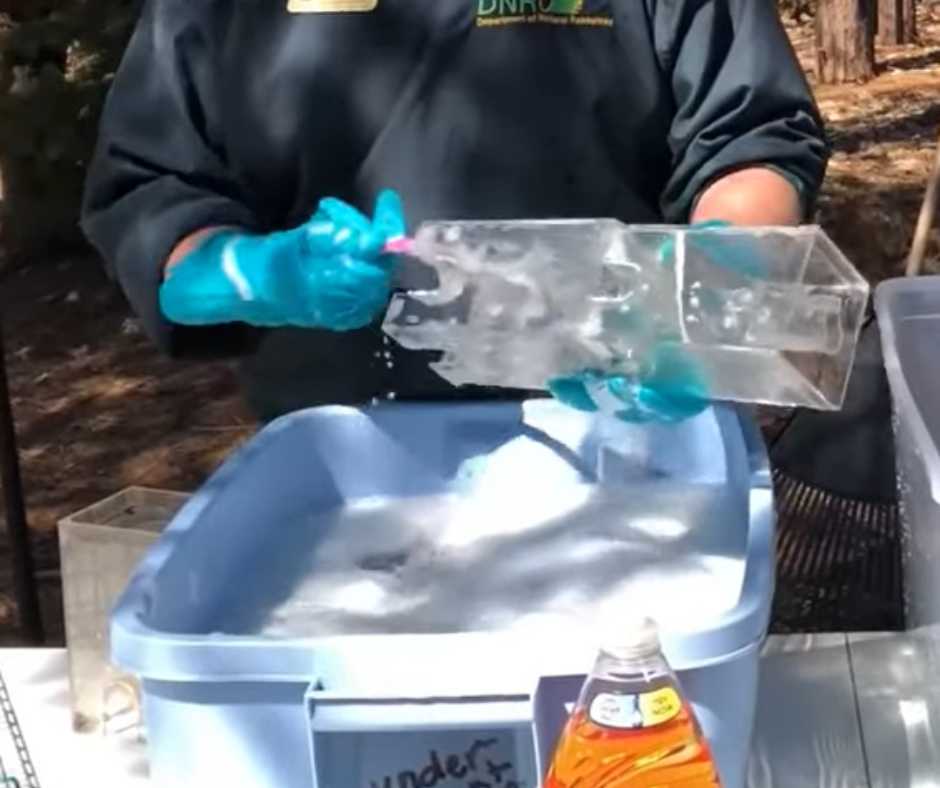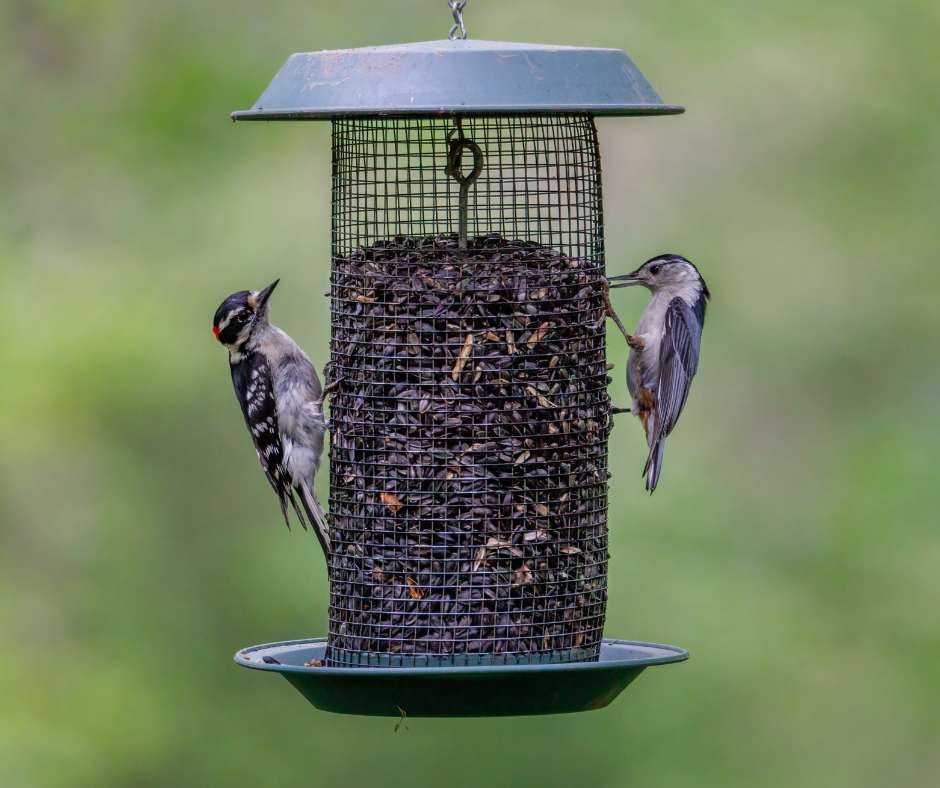Did you know that a clean bird feeder is as essential as the food you put in it? It’s true! Keeping your feeder clean keeps it shiny and beautiful and helps prevent diseases that could spread among our feathered friends.
But how often should you clean it, and what’s the best way to do it? In our blog post, we dive into everything you need to know about keeping your bird café spotless.
We’ve covered you, from the right tools and cleaners to a step-by-step guide for seed and nectar feeders. Get ready to roll up your sleeves and give your bird feeders the love they deserve – your backyard birds will thank you!
Why and When to Clean Your Bird Feeder
Imagine your bird feeder as a bustling café for feathered friends. Like any popular eatery, cleanliness is crucial to keep customers coming back. A clean bird feeder not only shines but serves as a safeguard against diseases that could otherwise spread among your avian visitors. The Cornell Lab of Ornithology suggests keeping feeders clean is essential for bird health and durability.
So, when should you roll up your sleeves? A good rule of thumb is thoroughly cleaning your feeder every two weeks. However, it’s time to clean immediately if you notice mold growing or leftovers piling up.
These are telltale signs your feeder is turning from a delightful dining spot into a potential health hazard for birds. Moreover, if a sick bird has visited your feeder, it’s crucial to clean it right away to prevent the spread of illness to other birds.
Keeping an eye on these indicators and maintaining a regular cleaning schedule can significantly impact the health and happiness of your backyard birds. It ensures your bird feeder remains a welcoming and safe spot for them to enjoy their meals, much like providing a beloved local café keeps its charm and cleanliness for its patrons.
You may also read: How to Clean Bird Poop Off Car

Preparing to Clean Your Bird Feeder
Before cleaning your bird feeder, you need a few things. Think of yourself as a cook who needs their best tools. First, put on gloves because cleaning gets messy. Then, take a scrub brush that can get into all the small spots where seeds and leftovers hide.
For cleaning stuff, we pick vinegar and gentle soaps. They clean well but keep the birds safe. These cleaners are soft on the feeder but firm against dirt, making your bird feeder clean and inviting. For example, when cooking, using the right cleaning stuff makes your bird feeder the best spot for birds.
Step-by-Step Cleaning Guide
To clean a bird feeder, first remove old seeds or nectar. Scrub the feeder thoroughly to remove hidden gunk, paying extra attention to nectar feeders with vinegar rinses to prevent mold. Ensure the feeder is completely dry before refilling to avoid mold growth and keep birds healthy.
Let’s deep dive in.
Empty the Stage
First up, remove all the old seeds or nectar from the feeder. Think of it as clearing the table before setting it with fresh goodies.
The Scrub Down
Now, grab your scrub brush and clean. Give seed and suet feeders a thorough scrub to eliminate all the hidden gunk. Those sneaky spots can collect a lot of leftovers, so make sure to get every corner.
Special Care for Nectar Feeders
Hummingbird feeders are like high-maintenance guests; they need extra attention. A rinse with vinegar every so often will keep them sparkling and safe for your tiny, buzzing visitors. This step is crucial because nectar can get moldy faster than seeds, and we don’t want sick hummingbirds.
Dry Off
The last step is super important. Make sure your feeder is completely dry before you fill it up again. Any moisture left can lead to mold, and that’s a big no-no. Think of it like baking a cake – if the pan’s wet, the cake’s going to flop.
This process doesn’t keep your feeders looking good; it’s about ensuring the birds visiting your garden stay healthy and happy. Plus, seeing a well-kept feeder full of lively birds is a surefire way to bring a smile to your face. So, roll up those sleeves and give your bird feeders the spa day they deserve – your backyard buddies will thank you!
Maintaining Your Bird Feeder
Keeping your bird feeder in shape is like running a small café for your feathered friends. The goal? Keep it a place where they love to hang out. Preventing mold and keeping the diner appealing are your top priorities.
Regular cleanings are a must. Imagine if your favorite coffee shop never cleaned up; you’d think twice about visiting, right? Birds feel the same about dirty feeders.
When it comes to food, freshness is key. As you wouldn’t want to eat stale bread, birds prefer fresh seeds and nectar. Replace the food often, at least once every couple of weeks, and more often during hot, humid weather when food spoils quicker. This keeps the birds coming back for more and helps prevent mold and disease spread.
A clean and well-stocked feeder also means you’ll likely see a wider variety of birds. It’s all about creating a welcoming space that meets their needs. So, keep that feeder clean, fill it with fresh food, and enjoy the bustling bird activity in your garden. Remember, a little effort goes a long way in making your backyard a bird paradise.

People Also Asked
Can I rinse the feeder with water?
Not really. Vinegar or mild detergent is necessary to eliminate bacteria effectively (Project FeederWatch recommends this too).
How do I know when it’s time for a deep clean?
Mold, odors, or a drop in bird visits signal it’s time for a thorough clean.
Should I clean my bird feeders in the kitchen sink?
Nope. It’s safer to clean them outdoors or in a utility sink to prevent spreading germs.
What if I spot a sick bird?
Remove and clean your feeder immediately. Keeping an eye out for more sick birds and consulting with wildlife experts is crucial.
Wrap Up
And that’s a straightforward guide to keeping your bird feeders clean and your garden bustling with avian life. Regular maintenance safeguards bird health and makes your space a haven for birdwatching. Any cleaning hacks or queries? Share them below!






